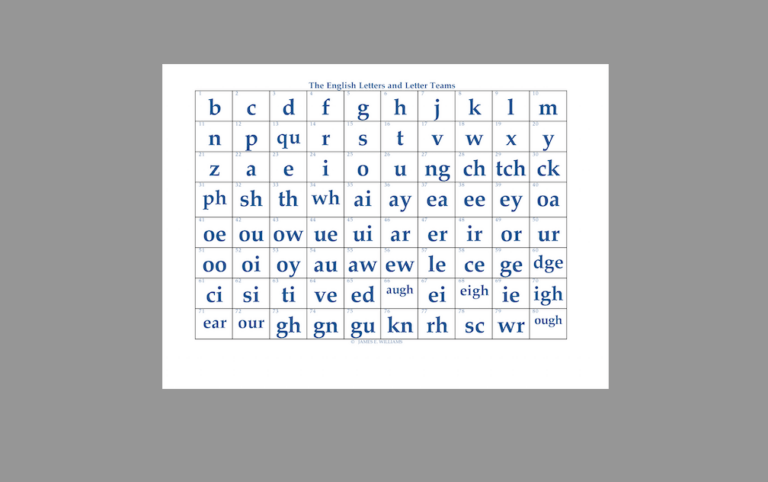Many Reading Teachers Lack Training in Science-based Reading Instruction and Phonics
Many Reading Teachers Are Not Trained in the Science of Reading and Phonics
Reading is one of the most important skills that children need to learn in school. It is the foundation for academic success and lifelong learning. However, many students struggle with reading and do not achieve the expected levels of proficiency. According to the 2019 National Assessment of Educational Progress (NAEP), only 35% of fourth-graders and 34% of eighth-graders scored at or above proficient in reading.
One of the reasons why many students struggle with reading is that many reading teachers are not trained in the science of reading and phonics. The science of reading is a collection of research from multiple fields of study that tells us what matters and what works in literacy instruction. Phonics is a part of the science of reading that teaches students how letter patterns represent sounds in written language.
This blog post will explore why many reading teachers are not trained in the science of reading and phonics, what are the benefits of such training, and what can be done to improve the situation.
What is the Science of Reading and Phonics?
The science of reading is a collection of research from multiple fields of study, such as cognitive science, neuroscience, linguistics, and education, that tells us how children best learn to read and how to teach them effectively. The science of reading is based on models that describe how reading works in the brain and what skills are involved in reading comprehension.
One of the key skills involved in reading comprehension is word decoding, which is the ability to read words by applying knowledge of letter-sound relationships. Phonics is a part of the science of reading that teaches students how letter patterns represent sounds in written language in a systematic and explicit way.
Phonics instruction helps students decode words by teaching them:
- Phonemic awareness: The ability to identify and manipulate individual sounds in spoken words.
- Letter-sound correspondences: The knowledge of how letters and groups of letters link to sounds.
- Spelling patterns: The rules and patterns that govern how words are spelled.
- Word analysis: The ability to break down words into smaller units, such as syllables, prefixes, suffixes, and roots.
Phonics instruction also helps students read multisyllabic words that are common in academic texts and content areas. By teaching students how to decode words, phonics instruction supports their reading comprehension, vocabulary, fluency, spelling, writing, and confidence.
Why are Many Reading Teachers Not Trained in the Science of Reading and Phonics?
Despite the overwhelming evidence that supports the science of reading and phonics instruction, many reading teachers are not trained in these approaches. There are several possible reasons for this situation:
- Lack of awareness: Many reading teachers may not be aware of the latest research and evidence on how children learn to read and how to teach them effectively. They may rely on outdated or ineffective methods that are not aligned with the science of reading.
- Lack of access: Many reading teachers may not have access to high-quality professional development or resources that provide them with deep knowledge and skills in the science of reading and phonics instruction. They may face barriers such as time, cost, availability, or quality.
- Lack of support: Many reading teachers may not receive adequate support from their schools or districts to implement the science of reading and phonics instruction. They may face challenges such as curriculum alignment, assessment alignment, instructional materials, coaching, feedback, or collaboration.
- Lack of motivation: Many reading teachers may not be motivated to change their practice or beliefs about reading instruction. They may have personal preferences or biases that prevent them from adopting the science of reading and phonics instruction.
What are the Benefits of Training Reading Teachers in the Science of Reading and Phonics?
Training reading teachers in the science of reading and phonics instruction can have significant benefits for both teachers and students. Some of these benefits include:
- Improved student outcomes: Training reading teachers in the science of reading and phonics instruction can improve student outcomes in reading comprehension, vocabulary, fluency, spelling, writing, and confidence. Research shows that systematic and explicit phonics instruction makes a bigger contribution to children’s growth in reading than instruction that provides non-systematic or no phonics instruction. Phonics instruction also helps students who struggle with reading or have learning disabilities by providing early identification and intervention.
- Improved teacher knowledge and practice: Training reading teachers in the science of reading and phonics instruction can improve their knowledge and practice of literacy instruction. Teachers can gain essential knowledge and skills to master the fundamentals of literacy instruction required to apply and transform student learning. Teachers can also learn how to use assessment data to inform their instruction and differentiate their instruction to meet the needs of diverse learners.
- Improved teacher confidence and satisfaction: Training reading teachers in the science of reading and phonics instruction can improve their confidence and satisfaction in their profession. Teachers can feel more prepared and competent to teach reading effectively and efficiently. Teachers can also feel more motivated and engaged in their work and experience less stress and burnout.
Conclusion
Reading is a vital skill that every child deserves to learn. However, many students struggle with reading because many reading teachers are not trained in the science of reading and phonics. The science of reading is a collection of research that tells us what matters and what works in literacy instruction. Phonics is a part of the science of reading that teaches students how letter patterns represent sounds in written language.
Training reading teachers in the science of reading and phonics instruction can have significant benefits for both teachers and students. It can improve student outcomes in reading comprehension, vocabulary, fluency, spelling, writing, and confidence. It can also improve teacher knowledge, practice, confidence, satisfaction.
Meanwhile, until teachers universally receive instruction in science-based reading instruction strategies, the We All Can Read Online Program offers state-of-the-art instruction available immediately for teachers, parents and students. Here are some of the advantages our online program offers to teachers who do not have training in science-based reading, most specifically phonics:
- It is a comprehensive, science-based reading program that teaches phonemic awareness, phonics, decoding, fluency, spelling, and pronunciation using an Orton-Gillingham-based, multisensory approach.
- It is accessible online and does not require prior training to implement. It provides direct instruction in the form of video, audio, and text that students can work on independently.
- It is cost-effective and offers the first 10 lessons for free. It also provides hundreds of printable lessons and worksheets.
- It is suitable for students in 3rd grade to 12th grade, adults, and learners of English as a second language.
- It has been used successfully by various groups such as the Georgia Army National Guard’s Adult Literacy Training Project.






